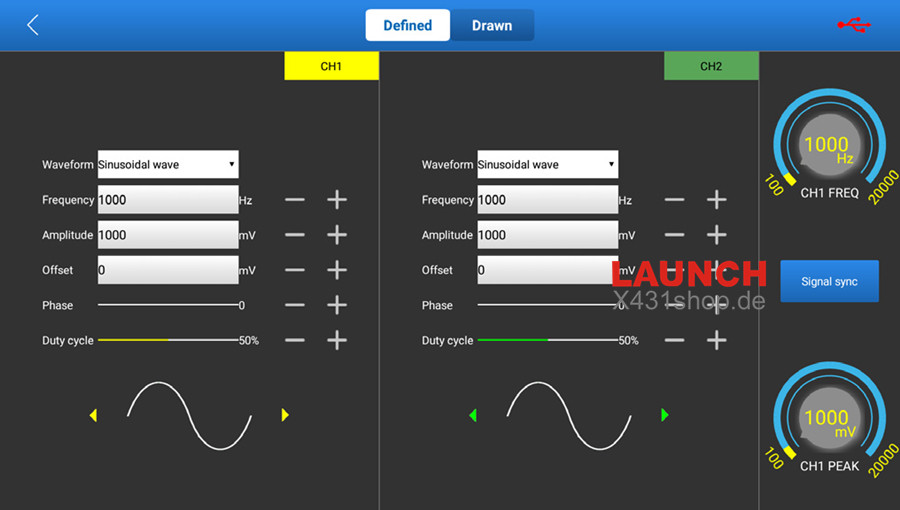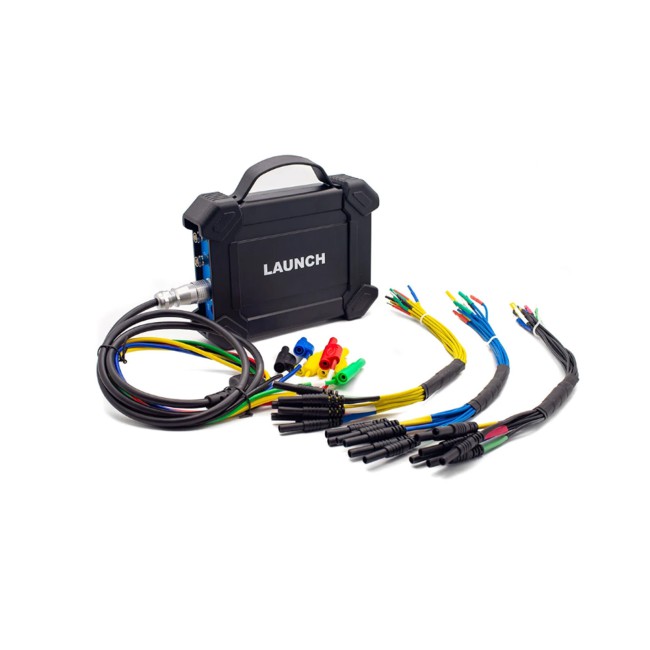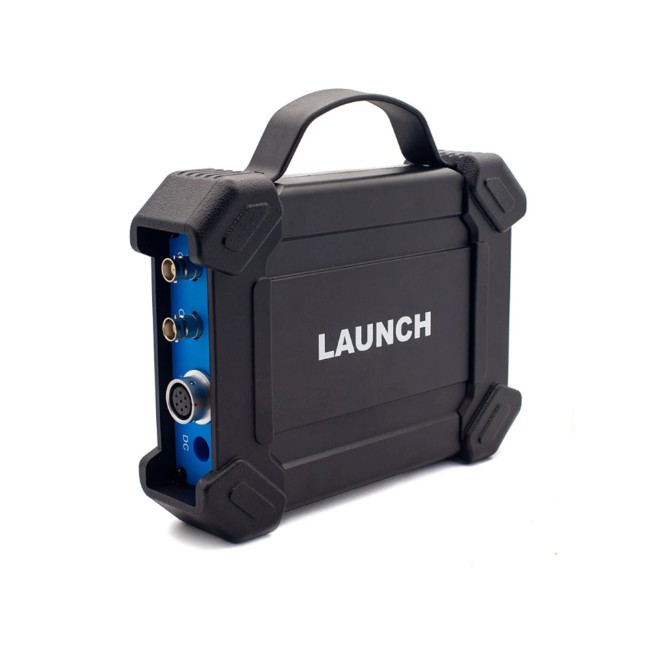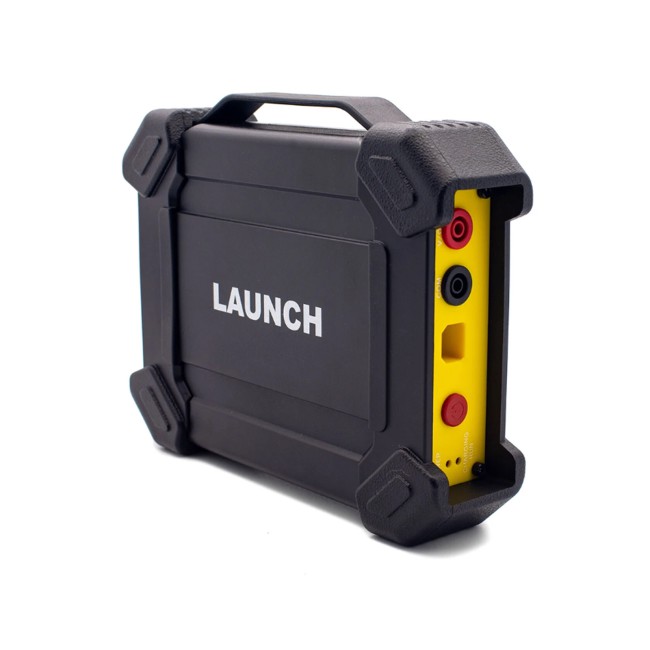Launch S2-2 Sensorbox DC USB Oscilloscope 2 Channels work with Pro3s+ V5.0, X431 PAD V/ PAD VII
Buy Now: €474.00
Scopebox: S2-2 2 Channel
2 Scopebox: S2-2 2 Channel


2024 Launch X431 PAD V Elite EU Ship!
DE/EU Ship, NO Tax!
Better price, please contact Susie!
Whatsapp:+86-17782330462
Email: sales@X431Shop
DE/EU Ship, NO Tax!
Better price, please contact Susie!
Whatsapp:+86-17782330462
Email: sales@X431Shop
SO738
Shipping:
Free Shipping
Express Shipping ServiceLieferzeiten: DHL:3-7 Arbeitstage. Yanwen: 5-12 Arbeitstage. Siehe Details »
Weight:
4.8KG
( 2.18LB )
Package:
44.5cm*38cm*14.2cm
( Inch: 17.48*14.92*5.58 )
Returns:
Erstattung: innerhalb 30 Tagen. Der Kunde vertr?gt Versandkosten Details lesen »
Related Download Files
Product Description
Launch S2-2 Sensorbox it is designed to test and simulate most vehicle sensors. quickly troubleshooting the ECU.
Launch S2-2 Sensorbox DC USB Oscilloscope 2 Channel
Launch S2-S works with:
2. DBScar VII Device
- X431 deice: X431 Pro3 APEX, PRO DYNO, PROS V5.0, X431 PRO TT, V V5.0, PRO3S+ V5.0
- IMMO Series: IMMO Elite, IMMO Plus
- Creader Series: CRP919X BT, CRP919E BT
LAUNCH S2-2 Sensor box module is specially developed for diagnosing/testing/simulating most vehicle sensor faults. With its help, users can easily and quickly diagnose and simulate the sensor to rapidly troubleshoot the ECU.
LAUNCH S2-2 Sensor box module also supports the vehicle multimeter function. Through this function, users can test voltage, resistance, and capacitance. The function uses the same hardware device as the sensor module. The module cannot be used separately, and must be used together with Launch-specific diagnostic tools that are compatible with this module.

Development Backgrounds:
The sensor is the signal input device of the vehicle ECU. It converts vehicle operating parameters such as vehicle speed, coolant temperature, engine speed, air flow, and throttle opening into electrical signals and sends them to the vehicle ECU. Then, the vehicle ECU adjusts the engine running status to maintain the engine in optimal condition.
Launch S2-2 Sensorbox Features:
- Check the ECU itself works or not
- It supports manual write the waveform data
- Simulate working condition of sensors without replacing parts
- Simulate some special working condition of sensors without replacing parts
- Be used as Multimeter to measures resistance, voltage AC/DC, capacitance, frequency and pulse signals, etc.
- One click to enters the intuitive menu of sensor, actuator, defined/drawn the waveform, timing waveform, multimeter, system settings.
Launch S2-2 Sensorbox Functions:
LAUNCH S2-2 sensor box mainly includes "Sensor", "Actuator", "Defined/Drawn", and "Timing Waveform".
LAUNCH S2-2 sensor box mainly includes "Sensor", "Actuator", "Defined/Drawn", and "Timing Waveform".
Sensor: Is used to simulate the input signals of the automobile electronic control system, and the automobile computer adjusts the running state of the engine according to these parameters.
Actuator: Is used to simulate the output control signal of automobile electronic control system, so as to judge the working conditions of automobile actuators such as idle motor, EGR solenoid valve, etc.
Multimeter: Through this function, users can test voltage, resistance, and capacitance.
Defined:
Waveform: There are 9 waveforms to choose; Forward sine wave, reverse sine wave, forward square wave, reverse square wave, medium voltage, straight line, high / low voltage straight line, triangle wave, and trapezoidal wave.
- Frequency: Set the frequency of the selected waveform.
- Amplitude: Set the amplitude of the selected waveform.
- Offset: Set the offset of the selected waveform.
- Phase: Set the phase of the selected waveform.
- Duty cycle: Set the duty cycle of the selected waveform.
- Signal sync: Can cause CH1 and CH2 to output signals at the same time.

Hand-drawn:
Total frame: 1-3 (optional). Indicate the total number of output points
Generally, one waveform is composed of 100 points. The values 1-3 indicate that you can select 100, 200, or 300 points to form a waveform.
- Edit frame: You can edit a single frame or edit all
- Waveform: You can select a preset waveform and place it in the hand-drawing area
- Frequency: Frequency of a single frame (for 3-frame output, the total frequency is the set frequency/3)
- Amplitude: Amplitude of the output waveform
- Offset: Offset of the output waveform
Timing Waveform:
The function is used to match the timing waveform (crankshaft + camshaft) of the engine.
Technical Parameters:
Sensor Module:
Number of channels: 2
Precision: 1 %
Amplitude range: 0 – 20 V
Max output current: 20 mA
Predefined frequency range: 0 – 20 kHz
Square wave signal pulse frequency: 0 – 15 kHz
Square wave signal duty cycle: 0 – 100 %
Power supply: Simulator sensor output/max current 20mA (output is powered by battery) – Drive solenoid, ignition coil/output current 2A (external power supply)
USB: USB2.0 Type B (with charging and power supply function/5V)
DC voltage simulation: Support
Fixed frequency simulation: Support
Predefined waveform simulation: Support
Hand-drawn waveform simulation: Support
Signal generator interface: 2
External power supply port: 1
Solenoid interface: 1
Multimeter interface: 2
Working temperature: 0 °C – 50 °C
Storage temperature: -30 °C – 70 °C
Multimeter:
DC voltage: 0 V – 700 V
AC voltage: 0 V – 700 V
Resistance: 0 Ω – 40 MΩ
Capacitance: 0 F – 100 µF (maximum 30 s measurement time)
Diode: 0 V – 1,5 V
Continuity detection: Sounds below 30 Ω
Package Includes:
1pc x Sensor module
2ps x HT30 test leads
1pc x 7-pin interface adapter cable
1pc x Battery clamps cable
1pc x USB cable
3pcs x 6-way breakout lead
2pcs x Multimeter test pen (black + red)
1pc x Back Probe Pins Suite
1pc x Power adaptor
Kontakt:
Whatsapp: +86-17782330462
Video
Launch S2-2 Sensorbox the Functions Introducing
Tags: x431 partsnew arrival










